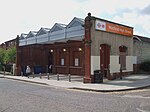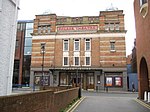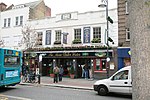Watford rail crash
In the early evening of 8 August 1996, a Class 321 passenger train operated by Network SouthEast travelling from London Euston on the West Coast Main Line Down Slow line at around 110 km/h (68 mph) passed a signal at danger. Having applied the brakes it eventually stopped 203 m (222 yards) past the signal and was traversing the junction between the Down Slow line and the Up Fast line. An empty Class 321 coaching stock train approaching at roughly 80 km/h (50 mph) collided with the stationary passenger train approximately 700 m south of Watford Junction whilst progressing across the connections from the Up Slow line to the Up Fast line.One person was killed and sixty-nine were injured, including four members of the train's crew. The person who was killed was Ruth Holland, book review editor of the British Medical Journal.
Excerpt from the Wikipedia article Watford rail crash (License: CC BY-SA 3.0, Authors).Watford rail crash
Ebury Road,
Geographical coordinates (GPS) Address Nearby Places Show on map
Geographical coordinates (GPS)
| Latitude | Longitude |
|---|---|
| N 51.658 ° | E -0.3884 ° |
Address
Ebury Road
Ebury Road
WD17 2RE
England, United Kingdom
Open on Google Maps









